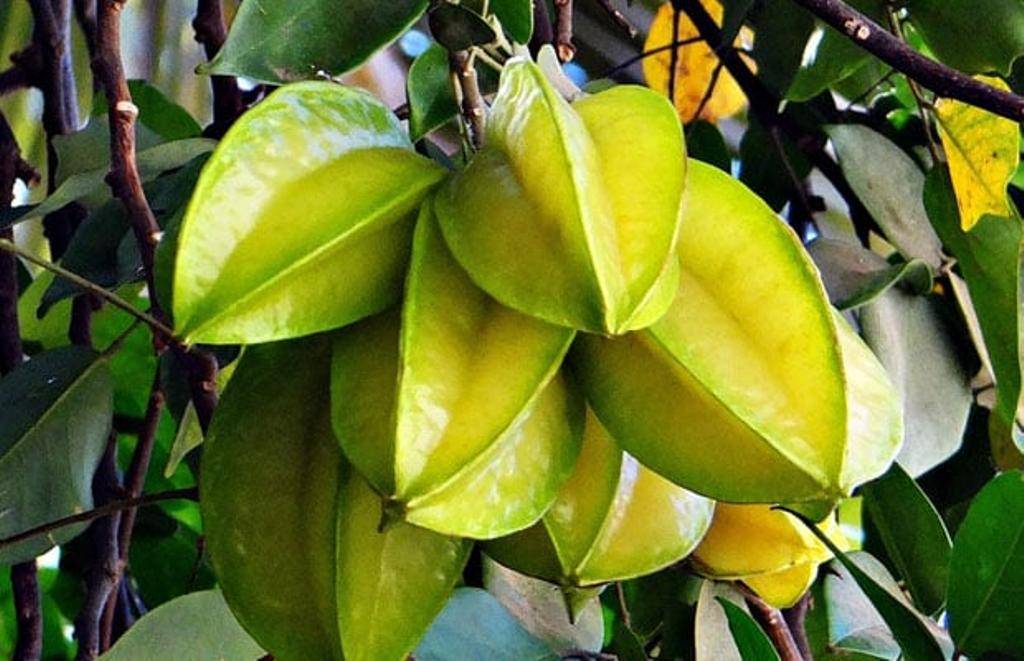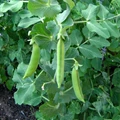
Star Fruit, also called Carambola grows in a large multi-stretched tree with dim green branches. A star fruit tree can grow up to 30 feet in height and can attain a breadth of 25 feet, yet to reap them effectively keep the tree in a more modest size. The harvesting period of Star Fruit is long and the fruits show up from the month of June. The name came as Star Fruit because of its star-like appearance. A fully developed tree can deliver up to 100 to 200 kilos of star fruits consistently.
Growing star fruit in a container:
Each Star Fruit contains around 10 to 12 seeds. To begin with, purchase a couple of star fruits from the market. At that point, cut the fruit and carefully take out all the seeds without damaging them. After removing the seeds, partially fill the cups with seed starter soil and afterward wet it with warm water. Later plant the same in a container.
Soil requirements:
Star Fruits supports a wide assortment of soil textures. As long as the soil channels off surplus moisture, it is fine for your plant. Loamy soil with a good amount of organic matter is appropriate for planting. pH level should range from neutral to acidic for optimum growth. Try to have a pH level between 4.5 and 7.
Temperature requirements:
Full sunny condition is best for growing star fruits. Additionally, a hot and humid climate is also preferred and should be kept at a distance from frosting. Anything under 35 degrees gets consistently more hazardous and temperature beneath 25degrees will lead to death.
Propagation: Through seeds:
Put the fruit seeds in soggy peat moss. Once the seeds start to sprout, the seedlings should be relocated into containers with sandy loam soil. Proper care will guarantee their durability and propagation through seeds can create variable outcomes. Despite the fact that this is regularly not the popular technique for propagation for business plantations, it is possibly a great way for home landscapers who want to grow a tree from locally acquired fruit seeds.
Through Cuttings:
For propagation through cuttings, cut off branches that have buds at an angle. Afterwards put them in a rooting chemical, and then into steady polythene cover with gardening soil. Make certain of watering the cuttings and roots will develop with time.
Through Air Layering:
It includes injuring one tree branch and then letting it grow root. Start by picking a branch that is at least 60 cm long. From the branch tips, make two equal cuts around the branch between 30 to 60 cm. The slices ought to be almost 2.5 to 3 cm apart. Eliminate the ring of bark and cambium from the branch. Cover the whole zone with a clammy chunk of peat moss and wrap it firmly with a plastic sheet. Cover the plastic with aluminum foil to hold dampness and avoid light. At the point when the branch of Star Fruit is all around rooted, cut it under the new two roots. Cautiously eliminate the wrap and plant the new tree in loam soil.
Watering requirements:
Star fruit plants require constant watering and the soil must be moist. Deep watering is required once or twice a week. During winters, reduce the watering of the plant as the same does not require much water. A star plant can endure flooding of water for 2 days to 10 days depending on its health.
Pruning requirements:
During the first two years, the branches that are 3 feet long must be trimmed in order to encourage lateral growth. Trimming is preferred during the winter season when the growth is dormant. Fully mature trees must be maintained under 6 to 12 feet for efficient harvesting.
Fertilizer requirements:
Fertilizer requirements for a fully grown tree range between 4 to 6 times per year and for young trees, fertilizer must be used every 30 to 60 days all around the year. Try to use a fertilizer in a composition of 6-2-6 or 6-4-6 and the same should contain manganese, magnesium, zinc, and iron.
Pest and Disease Management:
Leaves and twigs are attached by Plumose scales (Morganella longispina) and philaphedra scales (Philephedra tuberculosa). On the other hand, fruits are attacked by Brown scales (Coccus hesperidum). Horticultural oil spray will help to keep the pest away.
Pyrethrin should be used to stop diapers weevil (Diaprepes abbreviatus) and Myctides imberbis, both affecting the roots. Insecticidal soap is good to stop stink bugs and pyrethrin is good for squash bugs. Both types of bugs cause small holes inside the fruit.
Fungal leaf spot diseases such as Cercospora Averrhoa, Gloesporium sp, Corynespora cassiicola, Phomopsis sp, and Phyllosticta sp. are not that dangerous, however, should be taken care of.
Cephaleuros virescens causes Algal rust that leads to grey or red circular patches appearing on the bark. Contact your local Agri office for support.
Anthracnose fruit rotting is preceded by anthracnose leaf spotting. For treating the same, use bio fungicide or copper fungicide spray. If the fruit gets infected, remove the fruit from the tree.
Pythium fungi occur when the star fruit tree stays in a severe wet soil condition. First, remove the excess water and moisture from the tree. No cure is currently available for the disease and prevention is the only solution.
Harvesting:
Harvesting of a star fruit tree can be started once the grooves within the edges are yellow and the top part is green. If harvesting is done when the entire fruit becomes yellow in color, it leads to a lesser self-life.
















